Camera traps have been a key part of the conservation toolkit for decades. Remotely triggered video or still cameras allow researchers and managers to monitor cryptic species, survey populations, and support enforcement responses by documenting illegal activities. Increasingly, machine learning is being implemented to automate the processing of data generated by camera traps.
A recent study published showed that, despite being well-established and widely used tools in conservation, progress in the development of camera traps has plateaued since the emergence of the modern model in the mid-2000s, leaving users struggling with many of the same issues they faced a decade ago. That manufacturer ratings have not improved over time, despite technological advancements, demonstrates the need for a new generation of innovative conservation camera traps. Join this group and explore existing efforts, established needs, and what next-generation camera traps might look like - including the integration of AI for data processing through initiatives like Wildlife Insights and Wild Me.
Group Highlights:
Our past Tech Tutors seasons featured multiple episodes for experienced and new camera trappers. How Do I Repair My Camera Traps? featured WILDLABS members Laure Joanny, Alistair Stewart, and Rob Appleby and featured many troubleshooting and DIY resources for common issues.
For camera trap users looking to incorporate machine learning into the data analysis process, Sara Beery's How do I get started using machine learning for my camera traps? is an incredible resource discussing the user-friendly tool MegaDetector.
And for those who are new to camera trapping, Marcella Kelly's How do I choose the right camera trap(s) based on interests, goals, and species? will help you make important decisions based on factors like species, environment, power, durability, and more.
Finally, for an in-depth conversation on camera trap hardware and software, check out the Camera Traps Virtual Meetup featuring Sara Beery, Roland Kays, and Sam Seccombe.
And while you're here, be sure to stop by the camera trap community's collaborative troubleshooting data bank, where we're compiling common problems with the goal of creating a consistent place to exchange tips and tricks!
Header photo: ACEAA-Conservacion Amazonica
- @APendael
- | Mr.
Amos Pendael is a renowned conservation and research specialist with extensive experience in the field of Management Oriented Monitoring Skills (MOMS), remote sensing, and Geographic Information Systems (GIS). With a M.Sc in Natural Resources Assessment and Management.
- 0 Resources
- 0 Discussions
- 6 Groups
- @Xavier_Mouy
- | he/him
I build software and hardware tools to help the analysis or the collection of passive acoustic data.

- 1 Resources
- 6 Discussions
- 6 Groups
- @Netty_Cheruto
- | She/her



- 23 Resources
- 49 Discussions
- 8 Groups
- @jcbotsch
- | he/him
I'm a population and community ecologist studying the effects of global change on insect populations.
- 0 Resources
- 0 Discussions
- 6 Groups
Natural Solutions
Engineer, Ph.D in Computation Ecology. Interested in developing tools for the massive acquisition of high dimensional data from new technologies (e.g., imaging, omics), their analysis and visualization.
- 0 Resources
- 0 Discussions
- 13 Groups
- @Gody
- | He
Godfrey Nyangaresi, a dedicated Protection Manager with 12+ years of wildlife conservation experience. Skilled in technologies, administration, and law enforcement, he leads protection efforts at STEP, ensuring the sustainable conservation of elephants in southern Tanzania.
- 0 Resources
- 3 Discussions
- 17 Groups
- @Mathilde
- | she/her
Natural Solutions
Engineer, I work for a web development company on web application projects for biodiversity conservation. I'm especially interested by camera traps, teledetection and DeepLearning subjects.
- 0 Resources
- 0 Discussions
- 11 Groups
- @SueWachia
- | she/her
A marine environmentalist with diverse experience in collaborating on multidisciplinary & community-centred marine research focused on: fisheries management, blue carbon strategies, seagrass ecosystems, & ocean literacy.


- 1 Resources
- 1 Discussions
- 7 Groups
Masters student at University of Jena/ Assistant in LEPMON Project at Dr. Gunnar Brehms Lab
- 0 Resources
- 0 Discussions
- 1 Groups
- @taruuppal
- | She/Her
Grant researcher and writer
- 0 Resources
- 0 Discussions
- 1 Groups
- @Muzna
- | She, Her
Muzna Kashaf is a dedicated herpetologist who recently achieved her MPhil, showcasing her commitment to advancing knowledge in the field. Her research focus lies in amphibians, and she has utilized Geographic Information Systems (GIS) to enhance precision of her studies.
- 0 Resources
- 0 Discussions
- 2 Groups
My name is Ann Wambui ,a conservationist working as a conservation officer at Mugie Conservancy. Am a Diploma holder specialized in Wildlife Management from the Wildlife Research Training Institute. Currently, am Distance Learning student at the Africa Nazarene University.

- 1 Resources
- 5 Discussions
- 9 Groups
Caves don't tend to be well-liked ecosystems, being extremely dark, often quite cramped, and slippery. And the creepy-crawlies that live within them can be the stuff of nightmares. Nevertheless, one's attitude towards...
25 July 2016
Sharing personal 'best of' animal pictures is a favorite pastime of many camera trappers. A prolific camera trapper himself, Roland Kays has pulled together more than 600 images collected by 152 researchers from 54...
18 July 2016
Can camera traps placed in trees offer a way to rapidly inventory secretive arboreal mammals? How does this approach compare with traditional survey techniques? Dr Andy Whitworth and his colleagues set out to answer...
4 July 2016
Operating the largest tropical forest camera trap network globally, TEAM Network has accumulated over 2.6 million images. How can large datasets coupled with new techniques for data management and analysis provide...
28 April 2016
Camera traps have revolutionised wildlife research and conservation, enabling scientists to collect photographic evidence of rarely seen and often globally endangered species, with low expense, relative ease, and...
20 April 2016
When Victoria Espinel, President and CEO of BSA | The Software Alliance, spoke at the WWF Fuller Symposium, she took us on a whistle-stop tour of case studies where software and data are transforming our understanding...
10 March 2016
From artificial “sniffer” technologies to portable DNA sequencers, the Wildlife Crime Tech Challenge received hundreds of innovative ideas to help stamp out wildlife crime. Now, the Challenge is proud to announce 16...
22 January 2016
New technologies offer a lot of potential for conservation, but are there potential risks to deploying these new technologies? In this first thought piece for the Ethics of Conservation Tech Group, Dr Chris Sandbrook...
2 November 2015
May 2024
event
September 2024
October 2024
July 2021
June 2020
35 Products
Recently updated products
| Description | Activity | Replies | Groups | Updated |
|---|---|---|---|---|
| Thank you for elaborating, @evebohnett ! And for the heads ups! |
+22
|
Camera Traps, Drones | 1 week ago | |
| [oops, the same reply got submitted twice and there doesn't seem to be a "delete" button] |
|
AI for Conservation, Camera Traps | 2 weeks 6 days ago | |
| Hi @zhongqimiao ,Might you have faced such an issue while using mega detectorThe conflict is caused by:pytorchwildlife 1.0.2.13 depends on torch==1.10.1pytorchwildlife 1.0.2.12... |
+6
|
AI for Conservation, Camera Traps, Open Source Solutions | 2 weeks 6 days ago | |
| Thanks, and that's a match! All these pictures are from a lab experiment and formated with AmphIdent. We took weekly belly pictures of several larvae. The aim of this google... |
|
Camera Traps, Data management and processing tools, Software and Mobile Apps | 3 weeks 1 day ago | |
| Hi, this is pretty interesting to me. I plan to fly a drone over wild areas and look for invasive species incursions. So feral hogs are especially bad, but in the Everglades there... |
|
AI for Conservation, Camera Traps, Open Source Solutions, Software and Mobile Apps | 3 weeks 1 day ago | |
| Hi everyone!@LashaO and @holmbergius from the Wild Me team at ConservationX Labs gave a superb talk at last month's Variety Hour,... |
|
AI for Conservation, Camera Traps | 3 weeks 6 days ago | |
| Can't beat Dan's list! I would just add that if you're interested in broader protected area management, platforms like EarthRanger and SMART are amazing, and can integrate... |
|
Data management and processing tools, Camera Traps, Conservation Tech Training and Education | 3 weeks 6 days ago | |
| Saul Greenberg is a great guy! He has made a few very useful videos regarding the Timelapse/Megadetector integration:https://grouplab.cpsc.ucalgary.ca/grouplab/uploads/... |
+14
|
Camera Traps | 1 month ago | |
| EcoAssist is an application designed to streamline the work of ecologists dealing with camera trap images. It’s an AI platform that... |
|
Software and Mobile Apps, AI for Conservation, Camera Traps | 1 month 1 week ago | |
| Hi @Alasdair Great to hear from you! Thanks for the comment and for those very useful links (very interesting). And for letting @Rob_Appleby know. I can't wait to hear... |
|
Emerging Tech, Camera Traps, Conservation Tech Training and Education | 1 month 2 weeks ago | |
| Hello everyone, I'm interested in gathering insights on how the behavior of different species impacts the development and efficacy of... |
|
Biologging, Acoustics, Camera Traps, eDNA & Genomics, Emerging Tech, Marine Conservation | 1 month 3 weeks ago | |
| Hi Andrew! Great to hear your friend, Scott working in Indonesia! I bet he is working on east region with lot of cool monitor lizards!I use Mavic 2 as well for my crocodile... |
|
Camera Traps | 2 months 2 weeks ago |
Data Needed: Camera trap images for machine vision training
29 March 2017 8:06pm
7 February 2018 3:22pm
Hey, this is really interesting @theraido, thanks for sharing. Kirk has a nice writing style that's really easy to understand.. to the point where I feel lulled into confidence that I'd be able to replicate the project without too much fuss (I suspect this might be rather a strong case of over confidence). I was also amused that waiting for the birds to appear at the feeder seemed to be the slowest part of the project.
It looks like it's going to be a series of tutorials, with the goal being to build an open platform for exploring crow intelligence. Eventually, he says like to identify individual crows in the wild, and give them the opportunity to pass a series of tests. So it'll be interesting to follow along and see whether he reaches this goal.
In case anyone is interested, the next tutorial posted so far is 'building the rich man's deep learning camera', where he shares how to build a self-contained deep learning camera to detect birds in the wild.
20 April 2018 4:19am
Sounds great!
I am doing the almost same thing, since here we have a problem between elephant and human living in the same area and conflict a lot. We would like to warn people when elephants are approching by camera trap's detection of elephants.
How is your work now? Maybe we could share some info and put it forward together.
Anton
Recommendations Needed: Software for sampling photos from video
6 July 2017 7:42pm
20 July 2017 3:01am
Thank you Jason :) I will check both the wildboo.org and the youtube video you sent. All the best
20 July 2017 3:02am
Thank you Peter...and cool picture :)
Best regards
Nuno
17 April 2018 8:23pm
My preference is to use Adobe Lightroom, allowing me to move forwards or backwards one frame at a time. I can also adjust the exposure. This is an example from one of my videos.
I hope this is helpful.
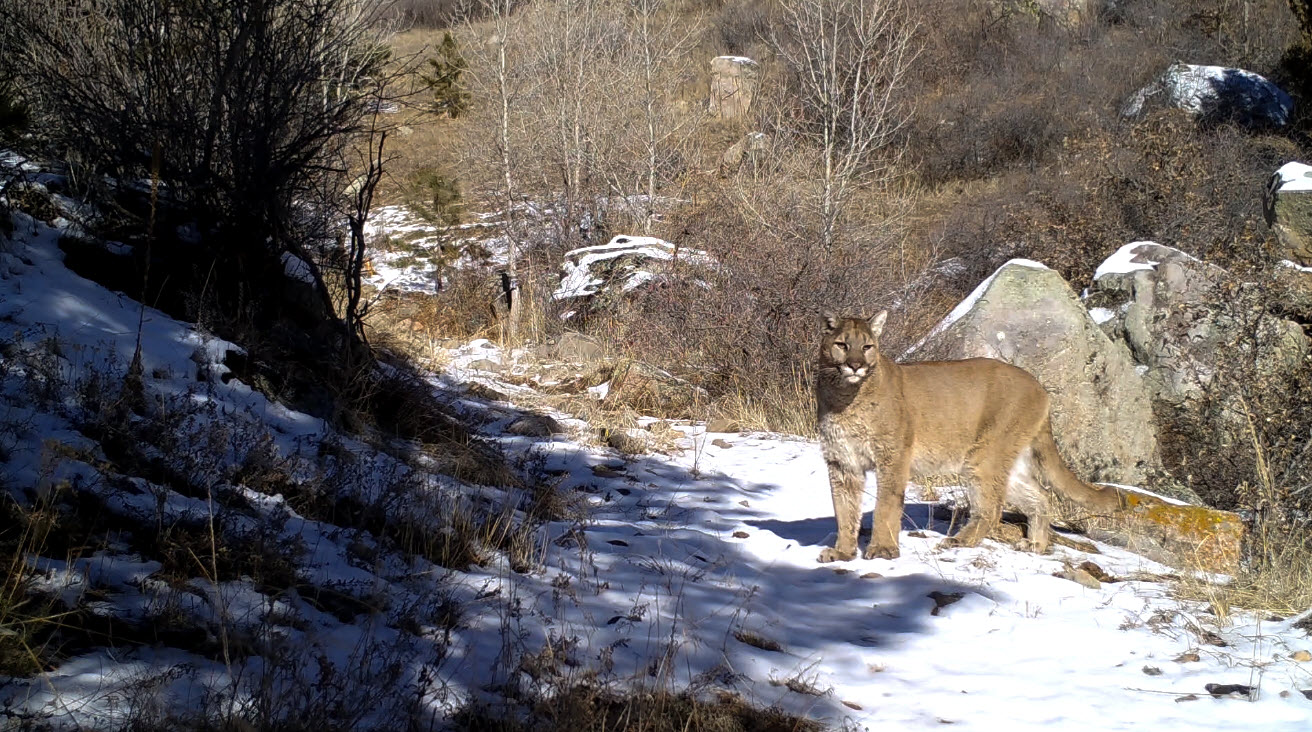
Camera Trapper from Colorado
17 April 2018 8:19pm
Camera trapping workshop, London
 Amy Fitzmaurice
Amy Fitzmaurice
16 April 2018 12:00am
[ARCHIVED]: Camera-trapping data consultancy
13 April 2018 5:00pm
The Plant-Powered Camera Trap Challenge
 Alasdair Davies
Alasdair Davies
3 April 2018 12:00am
#Tech4Wildlife Photo Challenge 2018: Our Top 10
3 March 2018 12:00am
Research: A rigorous, realistic and reproducible test of camera trap perfomance
7 November 2016 1:49pm
15 November 2016 6:08am
Also, just a general comment: some less epxensive cameras peform very well but may be more prone to 'glitches' over the duration of an extended study. I think the expectation of long term reliability is part of the reason some people choose the expenisve brand. Systematic tests of long duration reliability in field conditions would be really interesting, albeit probably too difficult/expensive to achieve.
15 November 2016 6:23am
Thank you Julia
Camera testing is certainly not Toffee's favorite activity - he would much rather be sniffing for scent marks !
The adverse effects of high temperatures on PIR are well established and they are a major problem anywhere that air temperatures get above about 30C. There is also a problem with cameras staying hotter than their surroundings for a few hours after sunset. I have also noticed that the infrared illuminator on the Reconyx actually heats up the camera.
Birds might be trickier to train than dogs, but you only need a reliable way to lure them to particular points within the field of view.
Certainly there are more factors to consider than only detection capability (though arguably that is the most important - better a fuzzy picture than none at all probably) and reliability is one of those. Bushnell Trophycams are notorious for losing their date settings (and this morning the one I am testing had done just that) for example. All sorts of equipment gets put through accelerated durability tests, and there is no reason why camera traps should not be similarly tested.
Given the huge projects that are built around camera trapping, and the scale of the conservation management decisions that are based on camera trap data it is a real problem that their performance is not tested and validated as fit for purpose.
Peter
7 February 2018 8:23pm
The sequence of images in the attached brief report shows why camera traps must be tested with real animal targets, and not with humans. The camera easily detects a human, but misses multiple images of the target dog.
Technology Empowered Conservation Lecture Series
 Paul Jepson
Paul Jepson
18 January 2018 12:00am
Instant Detect 2.0: A Connected Future for Conservation
 Sam Seccombe
Sam Seccombe
17 January 2018 12:00am
Resource: Camelot - new camera trap software
1 November 2016 11:16am
18 December 2017 12:16pm
Hi Egil, I think Camelot has a reasonable story around most of these things. Here's how I see it:
I set up a survey and I add the information about all the camera trapping stations (including camera IDs).
I import the photos. The database reads the data, time and camera ID from the photos so photos are linked to a camera trap location.
Camelot has two modes for importing data: a bulk import, and a per-session import. It sounds like you have many images up-front, and so bulk import may be the way to go. In this case Camelot can create the camera trap stations based on the location of the images, and their metadata.
http://camelot-project.readthedocs.io/en/latest/bulkimport.html
Then I do a quick first pass where I assign a species (tiger, leopard, etc) to each photo.
Yes, I expect you'll find the library UI suitable for this.
In a second round I want to identify the tigers. So I get all photos labelled with 'tiger'. Obviously the first one is a new animal thus I want a 'button' which allows me to add a new animal. Then in following pictures there is a drop-down menu with identified tigers. The order of the pictures presented is by camera trap location, data, time and then the next nearest camera trap location.
The sighting added in the first pass can be edited to add-in the individual, and new individuals can be added straight from the dropdown menu. Camelot does not have the ability to define a custom ordering of images: the ordering is always by camera trap station, by capture time (broadly; it's a bit more nuanced than this in reality). However does have the notion of "reference images", where images flagged in this way can be displayed, in another window (which can handy where multiple monitors are available), based on the currently selected sighting field data.
If things go as planned I'll likely be running into 100,000's of pictures, so I need to be able to do the first round pretty quickly. Then there will be 4-5 species I need to identify at the level of the individual. There will probably up to about 200 individuals of a species, but never more than about 20 at each camera trapping station, and the vast majority of individuals won't show up at more than 4-5 camera trapping stations either.
Camelot does support this sort of raw scale (x00,000 images) and has a reasonably efficient UI for identification. The information here may be relevant, depending on how many multiples of 100,000 it turns out to be.
However Camelot does not currently offer the ability to limit individuals in a field depending on the selected species (it is always the same individuals available in a dropdown regardless of the selected species). Potentially this limation could be worked around by having a dropdown available for each species, which will at least highlight in an export where a data-entry error may have arisen. (e.g., individual chosed in the "individuals" for species X field, but the selected species is Y.)
At 200 individuals the workflow for reference images could start to break down too, depending on the level of familiarity with the individuals. (i.e., repeatedly searching through all reference-quality images of a species, or images for a couple dozen individuals to make an identification could be onerous.)
I've looked around and I think Camelot is closest to what I want, but I wonder if I could get it really close to what I want. I have quite a bit of experience with SQL and building access databases, but I thought, with the prevalence of camera traps these days, that there would be more packages out there.
I agree Camelot really only goes part-way to meeting the requirements. It should be workable to use Camelot for the purpose, though support for individuals is relatively new and really hasn't been optimised for this sort of scale. It seems like the two places where Camelot is most lacking for this workflow are (and correct me if I'm wrong):
- lack of some more flexible ordering system for reference images against the selected image(s)
- lack of ability to filter options for a single "individuals" field based on the selected species
It'll likely be some time before these features are available in Camelot, but I'll add them to the development backlog.
-Chris
18 December 2017 4:21pm
Thanks for the reply Chris!
When you state:
"Camelot has two modes for importing data: a bulk import, and a per-session import. It sounds like you have many images up-front, and so bulk import may be the way to go. In this case Camelot can create the camera trap stations based on the location of the images, and their metadata."
When you mention 'location' you refer to the location of the images from where they are imported from? And not the gps location from the EXIF data if it's available, right? In my case no gps data would be available. But if I've downloaded the images to a hard drive in the field, and then back in the office import them into Camelot I can tell Camelot that the pictures from folder X belong to camera station 1?
You're right about the two points for optimizing. If photos can be ordered by station, date, time, and reference images ordered by 'distance to station', it greatly reduces the number of reference images to look through as the vast majority of individuals will be recorded at only a few stations, effectively trimming down the number of individuals to look through from 100's to a few dozen.
Cascading the drop down lists Species > individuals (or even area > species > individuals, or species > area > individuals, or in some cases species > group > individuals) would be beneficial too in the process of identifying individuals. In a SQL database this isn't hard to code into the fields on a form, but might not be that easy in Camelot as you would have to chose if the field you add depends on another field on the form.
19 December 2017 8:10am
Hi Egil,
When you mention 'location' you refer to the location of the images from where they are imported from? And not the gps location from the EXIF data if it's available, right?
Yes, that's right -- I should have said the 'directory of those images'.
But if I've downloaded the images to a hard drive in the field, and then back in the office import them into Camelot I can tell Camelot that the pictures from folder X belong to camera station 1?
Yes, that's right. Images can be dragged & dropped into existing camera trap stations, which have GPS coordinates associated. For the bulk import case, the data scanned from the image would need to be joined with GPS data to produce the final CSV for upload.
And thanks for the confirmation on how you'd expect that functionality should behave.
-Chris
FIT Cheetahs
 Larissa Slaney
Larissa Slaney
4 December 2017 12:00am
HWC Tech Challenge Update: Meet the Judges
20 October 2017 12:00am
Research: Trail Camera Comparison Testing (results)
3 October 2017 12:53pm
19 October 2017 11:14am
.
Best Practices: Camera trap survey guide released
12 October 2017 12:17pm
Recommendations Needed: Best camera traps for Central African rainforests?
10 October 2017 4:13pm
12 October 2017 11:34am
Hi John,
They will want a camera with good tolerance to humidity + precipitation (so a camera with a proper O-ring seal, and pack it with regularly-dried silica gel). Elephants will likely have a go at the cameras - so they will want to think about protecting their cameras with heavy-duty steel security boxes (perhaps with welded on spikes, which has worked in Thailand) and minimising smell left on and around their cameras during setup (e.g. use gloves, don't smoke or leave food).
Apart from that, the usual considerations apply: good detection circuitry (less of a problem if targeting elephants though, as they are massive) and battery life always helps.
Laila Bahaa-el-din et al. used Panthera and Scoutguard in Gabon; the Goualougo Triangle Ape Project in Rep Congo uses Reconyx I think; Julia Gessner et al. used Reconyx in Rep. Congo and Cameroon. The latter reported that (of 47 cameras), 4 were taken out by elephants and one by a leopard!
Ollie
Download New Conservation Tech Guidelines: Camera Traps, Acoustics and LiDAR
 Paul Glover-Kapfer
Paul Glover-Kapfer
11 October 2017 12:00am
How to lose a BRUV in 10 days
 Ivy Baremore
Ivy Baremore
26 September 2017 12:00am
Survey: Camera Trap Survey with WWF-UK
20 September 2017 9:48pm
Recommendations Needed: GSM Camera Traps
24 May 2017 1:42pm
10 July 2017 1:24pm
Hi Chloe,
I've had promising results with the Scoutguard MG983G-30M, and I believe a 4G version has just been released. The 3G version has some useful features, like two-way communication to change settings/get images and a audio call feature (which I haven't used). I'd be very pleased to hear how your tests go.
Cheers,
Rob
10 July 2017 4:04pm
Thanks everyone,
@TopBloke @Kai - I've not come across the Ltl Acorn ones - will take a look. So does that mean if it was purchased in the UK it would be locked to a UK SIM then? That might be problemativ as we tend to purchase here to test and set up before sending out when staff are heading back to the country of deployment.
@Rob+Appleby - That's good to know about the Scoutguard MG983G-30M too, thanks.
A supplier is going to send me a new model by the same people who make Scoutguard to test but he hasn't said what it is. Maybe it's the 4G one. Whatever it is if it is any good I will feed back on here
Chloe
10 July 2017 4:42pm
@@Chloe+Aust - pls google “ltl acorn uk”, you will get a lot info. No, no limited, just the company's sale rules. You could use it anywhere, but for example, if you wants to use it in kenya, you need a local sim card, such as safaricom... when you check photos from china, you will find most of them photoed by are ITI acorn. Panda,tiger, snow leopord, cloud leopard, leopard, golden cat....
Scoutguard is also a good china camrea traps. oldest company. only company have espano menu. but they are focus on US hunting market. not special for wildlife researching use.
The LOREDA is also good, the only brand focus on wildlife-bio researching camra traps in china. Might be do not have dealers/stock in uk.
From the Field: Developing a new camera trap data management tool
 Heidi Hendry
Heidi Hendry
7 July 2017 12:00am
Article: Google's cloud vision for automated identification of camera trap photos
12 April 2016 1:04pm
7 August 2016 11:25pm
An update to the automated species identification debate:
A paper has recently come out which used deep learning ("very deep convolutional networks") and managed 89% accuracy for the Snapshot Serengeti Zooniverse dataset, IF the image was first manually cropped around the animal. Seriously, who has time to do that? If the image remained uncropped they managed a woeful 35% accuracy.
Perhaps we have a long wait ahead of us for this to become a practical reality?
22 June 2017 7:22am
Note that paper isn't actually a journal article, hasn't gone through peer review, its a preprint.
24 June 2017 12:50am
Fair point, it isn't a peer reviewed article as yet. I had a poke around out of curiosity and wasn't able to track down a fully published paper yet (thought it's been a while since this preprint was released...). On reading, were there any issues that stood out to you that others should be aware of? And, as Ollie pointed out, the research wasn't getting a great response rate from uncropped images - I wonder if perhaps, given the time since the original publication, the results may have actually improved by now? It seems (from my interested but unqualified observer perspective) that the field is moving forward in leaps and bounds, such that a paper pre-published in march 2016 may very well be out of date by this stage...
Resources: Panthera Camera Trap information
5 April 2017 8:47pm
26 May 2017 12:39am
My understanding is that the Panthera cameras are only available to people or groups in Panthera's network. I tried to get some a few years back and had no luck, even for a project that had received Pathera funding in the past.
Regarding the poacher cam, I know @ColbyLoucks at WWF has developed a system using infrared thermal cameras that worked in the field trials.
Putting on my black thinking hat, the design as shown of the poacher cam will not be effective long-term once poachers know to look for it. Eric Dinerstein had worked on a project where such cameras would be concealed in a vine or some other organic-looking encasement.
26 May 2017 12:04pm
black thinking hat ! Interesting and honest.
Machine learning, meet the ocean
 Kate Wing
Kate Wing
10 May 2017 12:00am
From the Field: Dr Raman Sukumar and Technology Developments Needed to Conserve Elephants
5 April 2017 12:00am
Camera Trap Pictures Wanted
6 March 2017 11:38am
31 March 2017 10:18am
Paul,
I can get some when I do my next deployment (sometime next week at this stage).
Colin
31 March 2017 10:21am
Nice, thanks Colin! Are you deploying cameras as part of the phascogale project?
Paul - are you quite sure you don't need some camera trap photos of some gorgeous Australian mammals for your guidelines as well?
31 March 2017 10:28am
Steph,
Not quite. I'm coordinating a fauna monitoring project for a Landcare network and, of course, we hope to get phascogales. I've just retrieved a batch of cameras from nest box monitoring duty for the phascogale project and their next role will be to investigate a possible sighting of a Squirrel Glider in the area.
Colin
How to stop the thieves when all we want to capture is wildlife in action
 Paul Meek
Paul Meek
23 March 2017 12:00am
Recommendations Needed: Real-time enabled camera traps
17 August 2016 2:56pm
9 March 2017 7:32am
Hi Kai,
thanks for the links. Interesting. I requested them for pricing details.
The Panthera Anti-Poaching Cam makes use of existing networks and costs about 350 USD. That is not very expensive, is it?
Cheers,
Jan Kees
9 March 2017 9:51am
Hi Jankees
Thanks for your reply,
If there have existing network like RoyalKPNN.V. provide mobile phone service, there will be no problem, 3G/4G camera traps will works well. each cam 250 USD at the moment.
Now days hundreds of chinese tech team are working on LoRa and NB-IoT solutions as well. All of them want to be successfull like HUAWEI,ZTE and DJI. Nice people, good team, team work ,working 12 hours each day like machine, like arms race.
I am sure they are willing to support anti-poaching. I am not techman,but we are chinese, we have the duty to solve problems, be responsible for it. If you come to china oneday, let me know.
Thanks, and your sensingclues is great.
Regards
Kai
14 March 2017 6:13pm
A number of good points have been made. In terms of remote-enable camera traps, you will mainly find one that use cellular data signals to transmit images. Typically these are thumbnails rather full resolution, so you will likely still need to retrieve teh emory cards for analysis. Also, traps that transmit images tend to have a lionger time lag between shots, which can be a problem. Hunting web sites tend to have the most complete reviews and discussions of the various models.
If you want to use citizen science in the data analysis process, I would suggest looking at Zooniverse (www.zooniverse.org). It has a pretty well-thought-out platform.
Survey: Camera trap effects on people
2 March 2017 4:25pm
5 March 2017 3:34pm
Thanks, i send the it to my chinese friends, i am sure some of them finished the survey.
cheers
Kai
#Tech4Wildlife Photo Challenge: Our favourites from 2016
1 March 2017 12:00am

















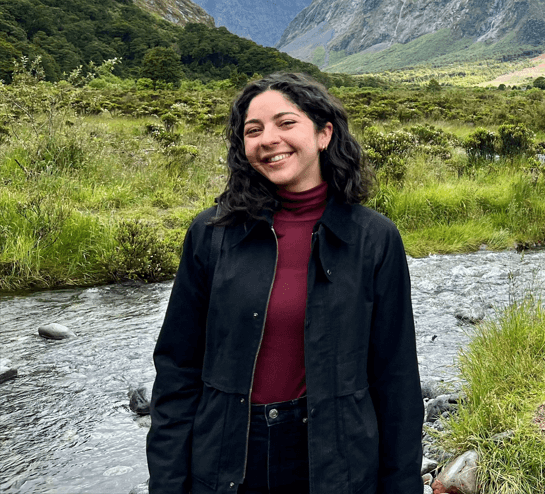

























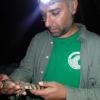






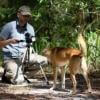


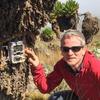





29 January 2018 6:40pm
Just chiming in, and this might not be helpfull at all.. but I recently came across a blogpost about 'building the poor man's deep learning camera'. Especially as it touches https://www.makeartwithpython.com/blog/poor-mans-deep-learning-camera/